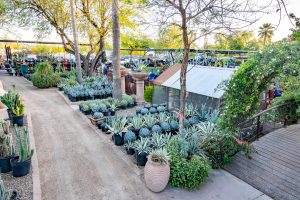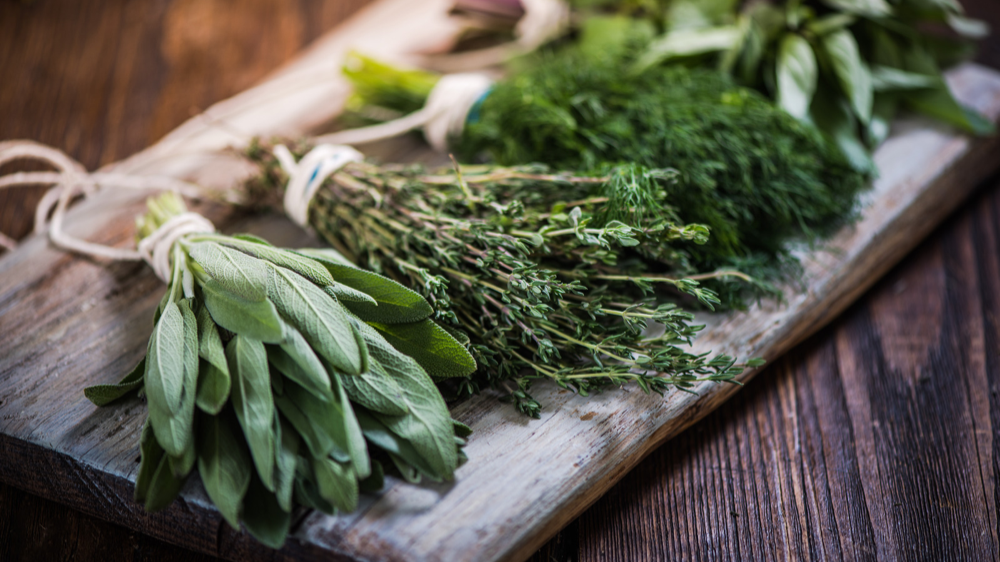
22 Sep 3 Easy Herbs To Start Planting Now
Herbs are a fantastic avenue to explore for those wanting to enjoy the fruits of their labor, so to speak. When it comes to botany, “herb” is a term that refers to an herbaceous plant. Herbs are small, seed-bearing plants that lack woody stems and aerial plant parts that die and decompose at the end of each growing season.
Herbs are generally perennials, although there are some herbaceous plants classified as annuals and biennials.
Below, The Green Goddess goes over a few herbs that are easy to start growing today as a way to boost your plant game and give you the added benefit of adding fresh herbs to your salads and other cooking recipes.
Time For Some Thyme
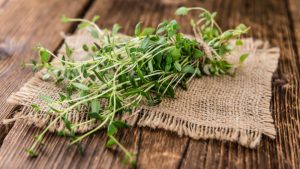
Thyme is a fantastic ingredient for cooking and crafting refreshing cocktails. Thyme is a plant that can withstand the elements, even when the dry season hits. Most will be able to take a hefty dose of heat as well. You can plant thyme in pots that are easily moved to shady or cooler areas on those days when you find yourself in triple-digit temperatures.
You can plant thyme with rosemary in either a pot or raised bed. Thyme is also often utilized for providing a fragrant border throughout a garden or around your steppingstones. If available, choose a spot that gets a lot of sun and drains well.
Level-Up With Lavender
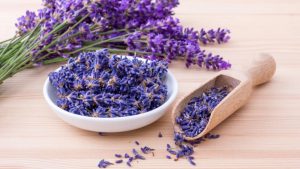
Grow some lavender in a sunny area with well-draining soil. Plant lavender in a pot in case you have to relocate to a shady area during the day. These hardy perennials can withstand harsh summer conditions and even reward you with delicate purple blooms. Lavender will help level up your cooking game, adding creations like lavender lemon bars to your repertoire.
Tarragon

Tarragon is a licorice-flavored herb that likes well-drained soil. Plant tarragon in a raised bed or pot placed in partial sun. The best combination for growing tarragon is early morning sun and afternoon shade. Make sure not to overwater your tarragon, which will cause your herbs to lose flavor and stunt growth.
Contact The Green Goddess Today

The Green Goddess Nursery and Foliage Company has been in operation since 1977. Our 3-acre facility includes greenhouse and display areas with thousands of assorted plants and specimen cactus for optimum customer selection. We also provide containers, fountains, garden art, and patio accessories.
Our services include:
- Interior Foliage Design and Installation
- Patio Planting
- Outdoor Container and Planter Plantings
We have a vast selection of Malaysian, Vietnamese, and Asian planters as well as one of the largest selections of fountains in the Phoenix, AZ community. We also carry trash and ash receptacles, tiles, benches, tables, pedestals, pillars, and saucers. Contact The Green Goddess today and we’ll help you create beautiful and lush indoor or outdoor plant-scapes.
3 Dishes that Incorporate Fresh Herbs from Your Garden

Some of us grow plants in service of creating amazing plant-scapes while others like to get a little more practical use out of what they grow. Herb growers have a different agenda than those who decide to craft a green sanctuary.
Those summer herbs you’ve been growing might be ready to harvest now, which can lead to some interesting culinary creations. Below, The Green Goddess would like to provide our customers with some dishes (and drinks) that incorporate some of those fresh herbs that you’ve been busy cultivating. Read on for more information that will help you level up your cooking and mixology skills.
Tabbouleh Salad

Tabbouleh salad is faboola, especially if you’re bold enough to go heavy on the bulgur and the parsley. Given that you’re growing your parsley, you can ensure that there is only enough grain and other vegetables to complement the herb itself. Make sure to salt and drain the parsley and tomatoes to avoid a soggy tabbouleh and maximize this dish’s flavor profile.
Make Your Pesto the Besto
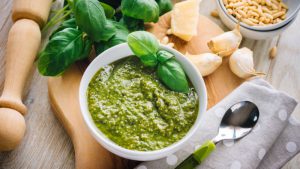
Even if you haven’t developed a taste for pesto, growing fresh basil might be the ticket that gets you in the pesto game. Making your very own pesto is a great way to save money on store-bought versions. As you get more intricate with your culinary creations, you can improve the taste and texture of your pesto by using a mortar and pestle. Use extra-virgin olive oil that has a light flavor profile.
Vegan Tofu Herb Salad

If you have certain dietary restrictions, you may be looking to utilize your fresh-grown herbs differently. A vegan tofu herb salad can incorporate veggies from any season. Those soft herbs you’ve grown will come in handy here — use mint, basil, and cilantro. The dressing will be key on this one. Choose between ginger, garlic, soy sauce, lime, Thai chile, or other bold flavors to enhance this dish.
Chickpea Salad with Dill and Pumpkin Seeds

If you’re looking to craft a perfect dish for taking to work with you, a chickpea salad with dill and pumpkin seeds might be the right choice for you. Combine chickpeas with grated carrots, toasted pumpkin seeds, a hearty amount of dill, and some kind of simple vinaigrette. This is one of those rare dishes that gets more flavorful when it sits.
Cocktail Creations

If you’re looking to incorporate those fresh herbs as ingredients for flavorful cocktails. Muddle fresh mint and basil for a mouth-watering mojito. Spirits such as gin go along great with herbal additions in a craft cocktail. Your porch and patio hang sessions will improve by 10% at least!
If you need guidance growing your indoor or outdoor plant-scape, The Green Goddess can help. We’ve been serving the Phoenix, AZ community and surrounding areas since 1977. Contact us today to learn more about how we can help add to your living or workspace.
Taking Care of Citrus Trees During the Fall and Winter

Citrus trees are great additions to outdoor plant-scapes due to the fact they produce fruit that is often rich in vitamins and nutrients. A citrus tree will also add a tremendous amount of aesthetic value right before you get to reap the fruit of your labors.
A citrus tree will also provide some much-needed shade, which is great for the summertime, especially in a hot, dry region like Phoenix, AZ.
Below, The Green Goddess goes over a few tips for keeping your citrus tree together during the Fall and Winter months.
Autumn Citrus Tree Care

When fall time comes, it’s important to pay special attention to your citrus tree. Make sure to apply your third fertilizer application no later than early September (right around Labor Day is ideal). Doing this will help your tree grow larger fruit. You can also supplement your fall fertilizer application with products like grower blends, which contain essential micronutrients like iron, manganese, zinc, and copper that will help your tree stay healthy.
Watering needs during the fall season are more relaxed during the summer. Water 10-days apart. Make sure to water your citrus tree deeply and evenly.
Citrus tree fruit will likely start to show different colors as the temperature drops during September and October. Avoid fruit splitting by staying on top of your watering. Lower temperatures at night might still cause your fruit to split, so do not worry. Citrus trees like Valencia and blood oranges tend to ripen later in the season when compared to other fruit trees. Even though it might be tempting, try to allow your fruit to ripen on the tree.
Citrus Tree Care in The Winter

Citrus trees that have early ripening fruit might be ready to pick during November. Make sure to monitor the weather as the winter gets underway.
Arizona has a shorter period of frost concerns than many regions of the country, but frost is something to keep in mind when maintaining your citrus tree – especially if you’re taking care of a younger one. You can protect your citrus tree from frost with burlap or frost cloth, especially during December and January.
Even though your citrus tree will be dormant during the winter months, it will still require some water. Reduce your watering cycle to once every three weeks or so. You can even settle for once a month in the winter if your citrus tree responds well to this. Your citrus tree might shed some leaves, which means the tree is now getting ready for its next growing season. Citrus tree fruit of all types should be ripe by January. Happy picking to you!
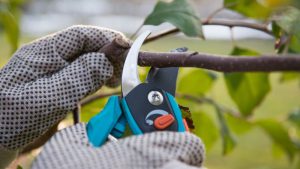
During February, your citrus tree will likely be getting ready to grow new buds, which is when it’s time to fertilize again. Use a citrus tree fertilizer that’s high in nitrogen. Always follow the instructions on the packaging to ensure safe and proper application. Certain amendments like humate, gypsum, and soil sulfur will help improve growth and promote better drainage.
February is also a great time to prune your trees so that the heat doesn’t get too cumbersome in April and May. Avoid removing lower branches wherever you can, which will end up bearing the most fruit.
If you’re planning on planting any new citrus trees, February and March is the best time. Temperatures will be comfortably mild. Avoid over planting, which will end up attracting bugs or even rats.
The Green Goddess: Indoor/Outdoor Plant-Scape Extraordinaire
Citrus trees are a fantastic investment for your outdoor plant-scape. With the right care, your citrus trees will keep bearing fruit for you year after year. Contact The Green Goddess today for assistance or stop by our garden center. Our trusted garden advisors can help with any questions or needs.
